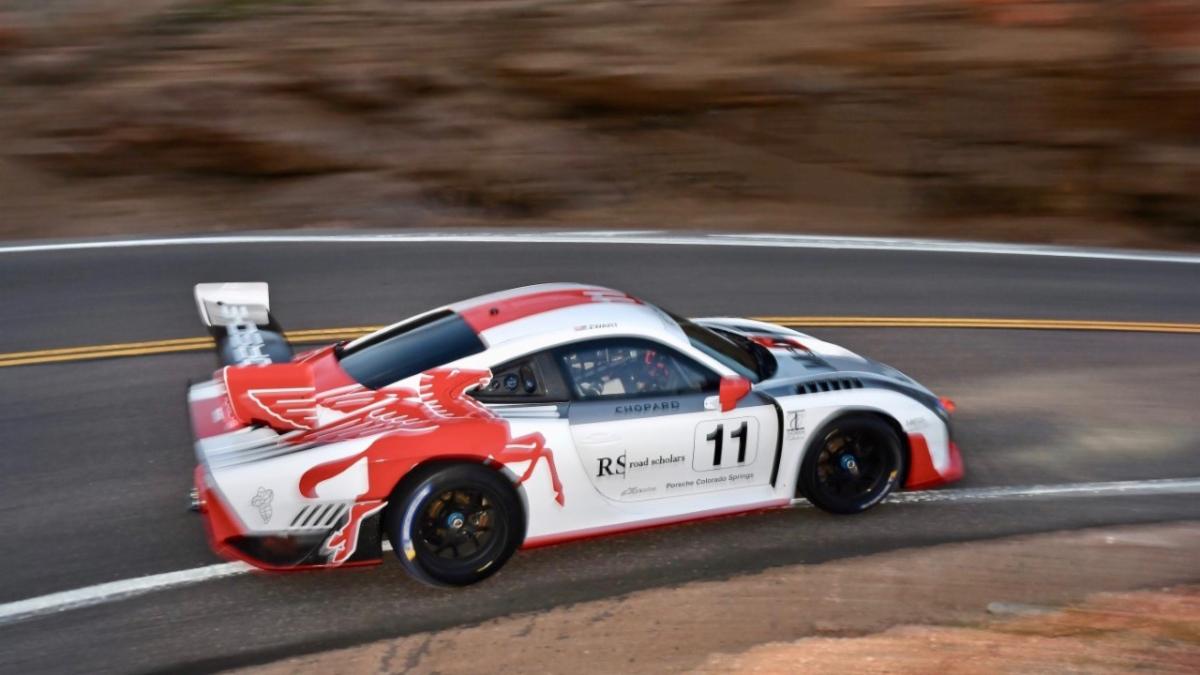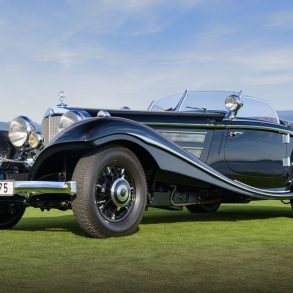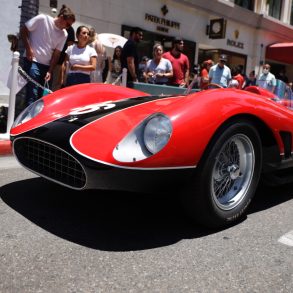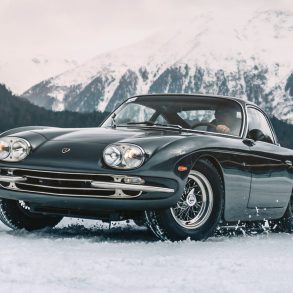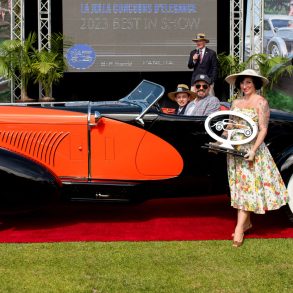A class of significant Porsche 935s will be featured at the 26th annual Amelia Island Concours d’Elegance on March 7, 2021.
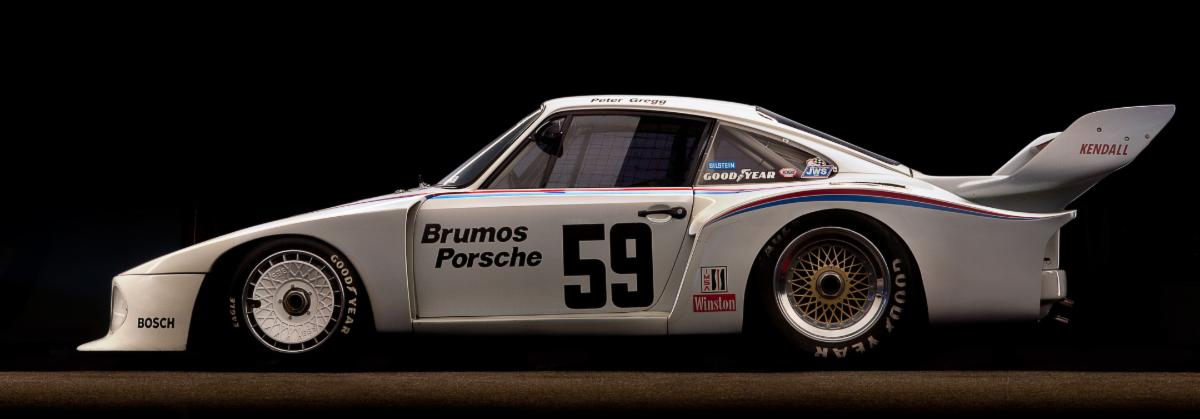
Porsche’s landmark 935 made its debut 45 years ago in a world that was reeling from the Oil Embargo. The auto industry and motorsport were especially hard hit. The 1974 24 Hours of Daytona and the 12 Hours of Sebring were cancelled outright. The economic and political consequences of the embargo summoned new realities and fresh rules for international motorsport. Bravely, Porsche chose this moment to create the famous Porsche Turbo, a more powerful, more luxurious version of their landmark 911. It became an icon. As did the race car that evolved from it and the new set of racing rules that shifted the emphasis of endurance racing from pure prototypes to modified “silhouette” GT cars. Porsche read those rules with exquisite care and the radical turbocharged Group 5 turbo 935 was the ultimate and exotic result.
The new rules gave the 935 its signature “slope nose.” When Porsche read the rule . . . “The material and shape of the wings (fenders) are free . . .” they took it literally, reshaping the front fenders to follow the contour of the trunk lid and repositioning the headlights in the front valence. The “slopenose” was born. The rule makers complained that “the wings are free” meant only modifications to the existing fenders were free. Porsche countered that they had obeyed the precise and literal letter of the rules. Porsche won that argument and the 935 had its immortal profile.

The 935’s initial tests at Circuit Paul Ricard were more than promising. In early development 935/1 recorded a sobering 194 mph top speed on the mile-long Mistral straight (faster than the Tyrrell Formula 1 car testing at the same time). By the end of the season the 935 with Le Mans gearing reached a top speed of 209 mph and accelerated from 0-125 mph in 8.5 seconds.
The potency of the new 935 was underlined when Manfred Schurti won the pole position for the 1976 Nurburgring 1000 Km with a time fast enough to qualify for that season’s Formula 1 German Grand Prix.
Success arrived in a hurry and lasted nearly a decade. Porsche’s 935 won its first race in 1976 (Mugello 6 Hours) and scored its final major international victory in the 1984 12 Hours of Sebring from a “rented” 935; a veteran of 110 races that had been in a museum. Variants of the 935 won Sebring six times, a record never surpassed (and equaled only by the Audi R8 prototype).
The 935 made it to Daytona’s victory lane 15 times — including six 24 Hour wins — from 1978 through 1983 plus logging 55 victories in FIA international championship races from 1976 through 1982.
Porsche exploited the rulebook to further extremes when new rules for 1978 left the front and rear bodywork practically unlimited. That created the ultimate 935 that was instantly nicknamed “Moby Dick” for its enormous swooping aero bodywork and white paint. Like the “slopenose’ 935 it garnered the wrath of the rules makers forcing Porsche to abbreviate, just slightly, their radical aerodynamic package. That didn’t seem to matter once the green flag dropped.

With nearly 800 hp available “Moby Dick” blasted through Le Mans’ speed traps at 227.5 mph. Every round of the 1978 World Championship For Makes from Daytona in February to Vallelunga in September fell to Porsche’s ever-evolving 935s.
In a one-two-three Porsche 935-sweep, the highly evolved Porsche 935 K3 scored endurance racing’s ultimate and most coveted victory winning the 1979 24 Hours of Le Mans overall. It was the first Le Mans victory by a production-based car.
The 935 was also utterly dominant in America winning 51 IMSA GT races from 1978 through 1984, including every event of 1980’s 14-race Camel GT championship season.
Above: Coming to Amelia in 2021, from the Ingram Collection, Jeff Zwart’s Pikes Peak #11 Porsche 935-19 is based on the Porsche 911 GT2 RS road car. The 3,042 lbs. (1380 Kg) rear-engine machine is powered by a twin-turbocharged 700 HP, 3.8-liter flat-six engine. The seven-speed PDK gearbox transfers the power to the rear-wheels. Rupert Berrington and Jeff Zwart photos courtesy of Porsche.
SCCA Pro Racing also embraced the 935. In 1979 John Paul Jr took his 935 to the Category II Trans-Am Championship winning six of nine rounds. In the same year Brumos’ Peter Gregg won eight of 15 IMSA Winston GT Championship races with his iconic white-red-and-blue Brumos 935, earning his sixth IMSA GT championship. The 935 did even better in “home games”; In 1979 Klaus Ludwig in Kremer Racing’s 935 K3 won eleven of 12 races to clinch the German National Group 5 championship.
The 935’s legend and legacy remain fresh in the minds and fantasies of all who saw them race. In 2018 Porsche tapped into those memories with a tribute to the mighty 935. Based on the 911 GT2 RS, the new 935 wears “Moby Dick’s” elongated shape, massive fairings, white base color and Martini Racing’s signature red and blue stripes.
“Fans loved the 935,” said Amelia Concours d’Elegance founder and Chairman Bill Warner, who as a staff photographer covered the IMSA GT Championship for Road & Track magazine. “The 935s were beasts: spectacular flame-belching, 200 mph, road racing ‘funny cars’ But the 935 looks the way we expect a Porsche 911 to look, even with big flares, big muscles, big wings and the 935’s signature slopenose.”
For more information visit www.ameliaconcours.org




